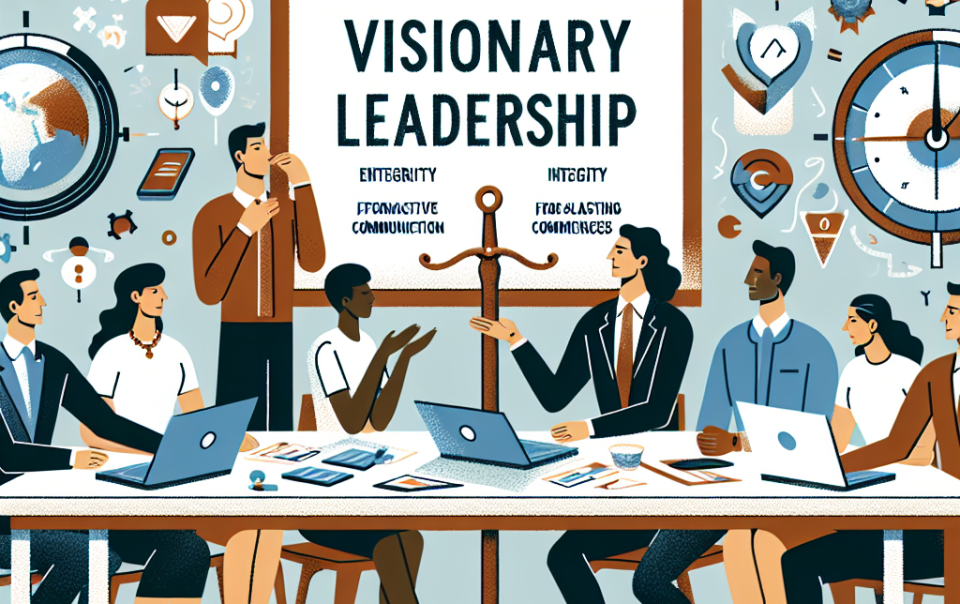
People-Centric Leadership and Brian Tracy: Discover How Truly Caring Leaders Drive Success
People-Centric Leadership: Putting Your Team First for Success
Imagine leading a team where every member feels valued, heard, and motivated to contribute their best. Sounds ideal, right? But in reality, many leaders struggle to create such an environment. Traditional leadership models often focus on tasks and results, overlooking the human element. This is where People-Centric Leadership comes into play, challenging the conventional wisdom by placing people at the heart of leadership strategies.
Understanding the Consideration Factor in Leadership
Consideration in leadership is all about showing genuine care and respect for your team members. It goes beyond just being nice; it’s about understanding their needs, strengths, and challenges. When leaders prioritize consideration, they create a supportive atmosphere where employees feel appreciated and motivated to excel.
For instance, think of a boss who takes the time to ask about your weekend or your family. These small gestures build a strong foundation of trust and loyalty. Employees are more likely to stay committed and go the extra mile when they know their leader genuinely cares about their well-being.
Moreover, consideration fosters open communication. When team members feel respected, they’re more willing to share ideas and feedback, leading to better collaboration and innovation. This not only enhances team performance but also creates a positive workplace culture.
Building Trust Through Genuine Care
Trust is the cornerstone of any successful team. Leaders who show genuine care build trust by being consistent, reliable, and honest. Trust empowers employees to take risks, share ideas, and collaborate effectively without fear of judgment or failure.
A great example is Satya Nadella, CEO of Microsoft, who transformed the company culture by prioritizing empathy and collaboration. His emphasis on understanding employees’ perspectives and fostering a growth mindset helped rebuild trust and drive Microsoft’s resurgence in the tech industry.
Building trust also involves transparency. When leaders communicate openly about company goals, challenges, and decisions, employees feel included and valued. This transparency reduces uncertainty and builds a sense of security, encouraging employees to stay engaged and committed to the organization’s success.
Empathy as a Core Leadership Skill
Empathy is the ability to understand and share the feelings of others. In leadership, empathy allows you to connect with your team on a deeper level, fostering a supportive and inclusive environment. Empathetic leaders can better address the needs and concerns of their employees, leading to higher job satisfaction and performance.
Take the example of Jacinda Ardern, the Prime Minister of New Zealand, known for her empathetic leadership during crises. Her ability to relate to people’s fears and provide compassionate responses strengthened public trust and unity, showcasing the power of empathy in leadership.
Moreover, empathy helps in conflict resolution. By understanding different perspectives, empathetic leaders can mediate disputes effectively, ensuring that all parties feel heard and respected. This not only resolves conflicts but also strengthens team cohesion and trust.
Effective Communication and Active Listening
Effective communication is essential for People-Centric Leadership. It involves not just speaking clearly but also actively listening to your team members. Active listening means fully concentrating, understanding, and responding thoughtfully to what others are saying.
Consider a leader who holds regular one-on-one meetings with team members, genuinely listening to their ideas and concerns. This practice not only provides valuable insights but also makes employees feel valued and heard, boosting their morale and engagement.
Additionally, clear communication helps prevent misunderstandings and ensures that everyone is aligned with the organization’s goals. By fostering an environment where open dialogue is encouraged, leaders can build stronger, more cohesive teams that work together efficiently towards common objectives.
Supporting Employee Growth and Development
One of the key aspects of People-Centric Leadership is supporting your team’s growth and development. This means providing opportunities for learning, career advancement, and personal development. When employees see a clear path for their growth, they’re more motivated and committed to their roles.
A good example is Google’s investment in employee development through programs like Google Career Certificates and internal training sessions. By prioritizing continuous learning, Google ensures that its employees are constantly evolving and ready to tackle new challenges.
Moreover, mentoring plays a significant role in employee development. Leaders who take the time to mentor their team members help them navigate their careers, build new skills, and achieve their professional goals. This not only benefits the individual but also strengthens the entire organization by fostering a culture of continuous improvement and collaboration.
Creating a Positive and Inclusive Work Environment
A positive and inclusive work environment is crucial for fostering a sense of belonging and respect among team members. People-Centric Leaders prioritize diversity and inclusion, ensuring that every employee feels valued and respected, regardless of their background or identity.
Companies like Salesforce have made significant strides in creating inclusive workplaces by implementing diversity training and promoting policies that support various employee needs. This commitment to inclusivity not only enhances employee satisfaction but also drives innovation by bringing diverse perspectives to the table.
Additionally, a positive work environment boosts employee morale and productivity. When employees feel safe and supported, they’re more likely to contribute their best work, collaborate effectively, and stay committed to the organization’s goals.
Recognition and Appreciation of Team Efforts
Recognizing and appreciating your team’s efforts is a vital component of People-Centric Leadership. Regular acknowledgment of hard work and achievements boosts morale and reinforces positive behaviors. It shows employees that their contributions are valued and encourages them to continue performing at their best.
An effective way to show appreciation is through both formal and informal recognition. For example, implementing an employee of the month program or simply thanking team members during meetings can make a significant difference in how valued they feel.
Furthermore, personalized recognition is particularly impactful. Taking the time to understand what motivates each team member and tailoring your appreciation accordingly can enhance its effectiveness. Whether it’s through written praise, public acknowledgment, or small rewards, personalized recognition fosters a stronger emotional connection between leaders and their teams.
Balancing Task Achievement with Personal Well-being
Balancing task achievement with personal well-being is a critical aspect of People-Centric Leadership. Leaders must ensure that while goals and deadlines are met, employees’ mental and physical health are not compromised. This balance leads to sustained productivity and a healthier work environment.
Companies like Patagonia excel in this area by promoting work-life balance through flexible working hours and encouraging employees to take time off when needed. By prioritizing well-being, Patagonia not only supports its employees but also enhances overall productivity and job satisfaction.
Leaders can achieve this balance by setting realistic expectations, providing support during high-stress periods, and promoting a culture that values rest and recovery. Encouraging regular breaks, offering mental health resources, and fostering an environment where employees feel comfortable discussing their well-being are essential steps in maintaining this balance.
Fostering Collaboration and Team Cohesion
Collaboration and team cohesion are fundamental to People-Centric Leadership. When team members work well together, they can achieve more than they could individually. Leaders play a crucial role in fostering collaboration by creating opportunities for teamwork and building strong interpersonal relationships.
A notable example is the approach taken by Zappos, an online retailer known for its strong team culture. By encouraging cross-departmental projects and team-building activities, Zappos has created a cohesive and collaborative workforce that drives the company’s success.
Additionally, fostering collaboration involves breaking down silos and encouraging open communication across all levels of the organization. Leaders can facilitate this by promoting a culture of mutual respect, where every team member’s input is valued and considered, leading to more innovative and effective solutions.
Leading by Example with Compassion and Integrity
Leading by example is a powerful way to embody People-Centric Leadership. When leaders demonstrate compassion and integrity in their actions, they set a standard for the rest of the team to follow. This not only builds trust but also inspires employees to adopt similar values in their work.
A powerful example is Howard Schultz, former CEO of Starbucks, who led with a strong sense of ethics and compassion. Schultz’s commitment to social responsibility and employee welfare created a loyal and motivated workforce, contributing to Starbucks’ global success.
Moreover, integrity in leadership involves being honest, transparent, and consistent in your actions and decisions. Leaders who uphold these values create a trustworthy environment where employees feel secure and supported, fostering long-term commitment and dedication.
Conclusion: Embracing People-Centric Leadership for Lasting Success
People-Centric Leadership is more than just a management style; it’s a philosophy that prioritizes the well-being, growth, and satisfaction of your team. By focusing on consideration, empathy, effective communication, and trust, leaders can create a positive and productive work environment where everyone thrives.
In today’s fast-paced and ever-changing business landscape, the need for compassionate and supportive leadership has never been greater. Organizations that embrace People-Centric Leadership not only enhance employee satisfaction and retention but also drive innovation and success.
As you reflect on your leadership approach, ask yourself: Are you putting your team first? How can you incorporate more empathy, support, and recognition into your daily interactions? By making these shifts, you can transform your leadership style and foster a thriving, motivated, and committed team.
Ready to take the next step in your leadership journey? Start by implementing one People-Centric strategy today and watch your team flourish.




